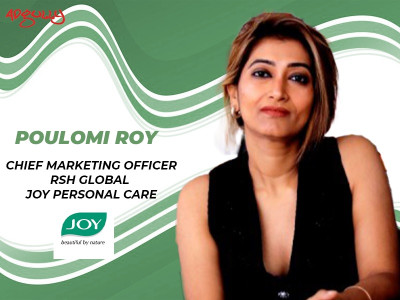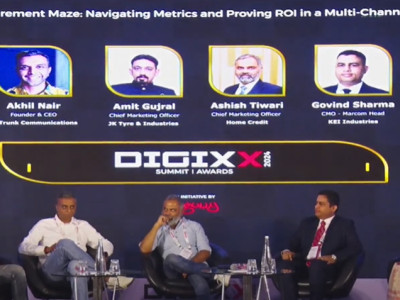Tapping into the might of regional PR - Strategic integration, and not numbers game
As regional public relations (PR) continues to expand its influence, it brings a distinct set of strategies to the table, tailored to the nuances and preferences of local audiences. These strategies often leverage deep understanding of regional cultures, languages, and media landscapes, allowing for more targeted and impactful communication. By tapping into grassroots networks, local influencers, and community events, regional PR fosters authentic connections and builds trust within specific geographic areas, offering a personalised approach that resonates with diverse audiences.
With over 100 languages, India’s diversity offers a huge potential for regional content. Couple this with the increase in literacy rate – which stands at 77.7% in 2023, an increase of 5% as compared to the 2011 census – and it is not surprising that regional media has been on a steady growth trajectory. In fact, the top two newspapers in the country in terms of circulation are Dainik Bhaskar and Malayala Manorama, both non-English publications.
“People across the country prefer consuming news in their native language and to effectively communicate with such a diverse audience, we need to be proficient in regional languages – either by building expertise in-house or collaborating with regional language specialists,” pointed out Jaideep Shergill, Co-Founder, Pitchfork Partners.
To leverage the reach of regional media, the approach by the PR industry needs to change. Shergill noted, “We tend to develop initial drafts and content in English, with subsequent translation into various regional languages. Things do get lost in translation, bringing inevitable gaps. Addressing this challenge requires a nuanced comprehension of the target audience and effective collaboration with vendors and associates who specialise in regional languages. For instance, a media interaction can have someone from the PR organisation who speaks the local language, thus reducing the possibility of ambiguity or miscommunication.”
Other impactful measures can include building a strong regional presence, incorporation of the relevant Indian languages in PR communication, and strategies driven by the preferences and cultural values of specific regions to build meaningful and long-term connections with local audiences.
Ameer Ismail, President, Lintas Live, MullenLowe Lintas Group, too, believes in the immense potential of regional PR in the ever evolving landscape of India. He observed, “Dramatically increased smartphone penetration is changing the way people in small towns and rural India consume information. The strength of regional language media and social media has brought about a huge cultural shift in consumer behaviour, especially amongst the youth of our country. Brands have realised the importance of capturing the attention of regional and rural audiences.”
Ismail further said, “Our strategy for regional PR seamlessly integrates a profound understanding of local cultures, languages, media landscapes, social media trends and usage of data with the flexibility to adapt to evolving dynamics. We prioritise fostering an appreciation for local nuances, enabling us to craft authentic and impactful storytelling that deeply resonates with diverse audiences. Across our brand portfolio – from The Leela, Porsche to Paree – we have integrated regional PR into the overall media canvas seamlessly.”
Elaborating on their work with SOCIAL, Ismail said that it is where teams implement tailored strategies to connect with varied regional audiences across India through hyperlocal community engagement initiatives like engaging with local artists through workshops, collaborating with local businesses and communities through initiatives like pop-up stalls, displays, etc., to garner more visibility. “Through regional PR, SOCIAL effectively communicates its brand message, values, and offerings that build brand awareness,” he added.
Pooja Chaudhri, Executive Director, Concept PR, too, believes that regional PR is growing at a fair clip. “As communication experts, we advise our clients to use the best possible tools to get their message across to their customers. With increasing growth in non-metros, regional languages play a crucial role. We must ensure that PR communication strategies are customised according to the regional customers and should not be an adaptation of a broader national one. I think, we live in a time when communication must be designed bespoke. With the rapid response that any communication evokes these days, the obsolescence of messaging is a genuine hurdle that needs to be crossed regularly,” she said.
Valerie Pinto, CEO, Weber Shandwick India, noted that the emergence of regional PR marks a dynamic shift in how brands engage with audiences, presenting distinctive strategies in contrast to traditional national approaches. At the core of regional PR lies a deep understanding of culture, local dialects, traditions, and cultural sensitivities, ensuring that messages resonate authentically. It is about adapting messaging, imagery, and campaigns to harmonise with local preferences and humour, ultimately enhancing brand relevance on a personal level.
“But beyond just tailoring content, regional PR places a strong emphasis on community engagement. By comprehending local event landscapes and grassroots initiatives, brands can authentically participate and contribute, fostering goodwill within the community. In the realm of regional PR, it is not just about reaching an audience; it is about becoming an integral part of the community tapestry, creating connections that go beyond marketing strategies,” Pinto added.
“Regional PR has always been a great way to take the message down to the grassroots,” said Tarunjeet Rattan, Managing Partner, Nucleus PR. At the same time, she observed, “However, there has been an interesting trend evolving, where the evolution of regional media and audiences has turned the tables on Metro PR. Now, when you look at integrating Regional PR into your overall plans you have to leverage it more strategically with good story pegs, rather than using it to boost your coverage docket. This signifies an overall move towards strategic integration rather than playing in the numbers game.”


















Share
Facebook
YouTube
Tweet
Twitter
LinkedIn